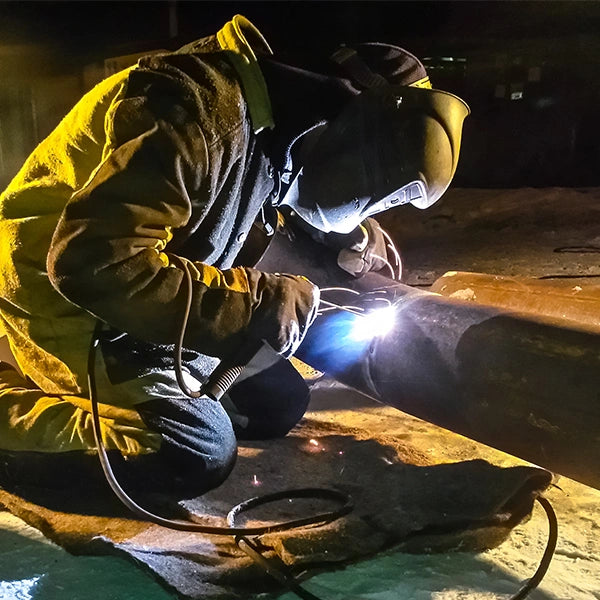Bonding WPS for Beginners: Beginning with Welding Treatment Specs
Bonding WPS for Beginners: Beginning with Welding Treatment Specs
Blog Article
Getting Welding Quality: Introducing the Tricks of WPS Application and Optimization
In the realm of welding, attaining excellence is a quest that hinges on the careful implementation and optimization of Welding Procedure Specifications (WPS) By diving into the crucial components, strategies, challenges, and best techniques linked with WPS, a world of welding excellence waits for those that are prepared to explore its midsts.
Importance of WPS in Welding
The Significance of Welding Procedure Specs (WPS) in the welding sector can not be overstated, functioning as the backbone for ensuring consistency, quality, and security in welding operations. A WPS offers in-depth directions on exactly how welding is to be lugged out, including important variables such as products, welding processes, joint design, filler steels, interpass and preheat temperature levels, welding currents, voltages, traveling speeds, and a lot more. By adhering to a well-defined WPS, welders can keep uniformity in their job, resulting in constant weld high quality across various jobs.

Crucial Element of WPS
Reviewing the essential parts of a welding procedure specification (WPS) is important for recognizing its role in welding procedures. One crucial aspect of a WPS is the welding procedure specification, which details the specific welding processes to be used, such as gas tungsten arc welding (GTAW) or protected steel arc welding (SMAW) By including these crucial components right into the WPS, welding procedures can be standardized, making certain quality, efficiency, and safety and security in welding procedures.
Approaches for WPS Optimization

Secondly, training and credentials of welding employees according to the specific needs of the WPS is critical. Offering comprehensive training programs and ensuring that welders are licensed to execute procedures described in the WPS can result in better welds and minimized rework.
Additionally, leveraging modern technology such as welding software program and surveillance systems can assist in optimizing WPS. These devices can help in tracking variables, ensuring parameters are within specified restrictions, and providing real-time comments to welders, allowing them to make immediate Website changes for enhanced weld top quality.
Usual Challenges and Solutions
Facing obstacles in executing the methods for WPS optimization can impede welding operations' efficiency and quality. One common difficulty is poor training or understanding of the welding procedure specs (WPS) amongst the welding group.
Another challenge is the absence of appropriate paperwork and record-keeping, which is crucial for WPS optimization. Without clear records of welding specifications, materials made use of, and evaluation outcomes, it comes to be tough to determine areas for enhancement and ensure consistency in welding procedures. Implementing a durable paperwork system, such as electronic welding monitoring software application, can aid enhance record-keeping and assist in data analysis for continual enhancement.
Additionally, inconsistent welding equipment calibration and upkeep can posture a substantial difficulty to WPS optimization. Routine equipment checks, calibration, and upkeep timetables must be adhered to strictly to ensure that welding criteria are accurately controlled and kept within the defined tolerances (welding WPS). By addressing these usual difficulties with aggressive solutions, welding procedures can enhance effectiveness, read more top quality, and overall welding excellence
Finest Practices for WPS Execution
To make sure effective WPS execution in welding procedures, adherence to industry standards and meticulous interest to detail are extremely important. When launching WPS implementation, it is essential to start by completely comprehending the details welding demands of the task. This requires a comprehensive evaluation of the welding treatment specifications, materials to be welded, and the environmental conditions in which the welding will take location.
As soon as the needs are clear, the next action is to pick the ideal welding treatment that lines up with these specifications. This includes speaking with the appropriate codes and standards, such as those supplied by the American Welding Society (AWS) or the International Company for Standardization (ISO), to make certain conformity and quality.
Additionally, documenting the whole WPS execution procedure is essential for traceability and quality control. Comprehensive records ought to be kept concerning welding specifications, material preparation, preheat and interpass temperatures, welding consumables utilized, and any type of discrepancies from the original procedure. Routine audits and reviews of the WPS can help recognize locations for improvement and ensure recurring optimization of the welding procedure.


Final Thought
Finally, the implementation and optimization of Welding Treatment Specifications (WPS) is critical for accomplishing welding quality. By understanding the crucial elements of WPS, executing reliable approaches for optimization, attending to typical challenges, and complying with ideal methods, welders can ensure high-grade welds and secure working conditions. It is necessary for professionals in the welding sector to focus on the correct execution of WPS to improve total welding performance and attain desired end results.
The Relevance of Welding Treatment Requirements (WPS) in the welding industry can not be overstated, offering as the foundation for guaranteeing uniformity, top quality, and safety in welding operations. A WPS offers thorough instructions on exactly how welding is to be brought out, consisting of essential variables such as materials, welding procedures, joint layout, filler steels, interpass and preheat temperatures, welding currents, voltages, travel rates, and a lot more. One crucial aspect of a WPS is the welding process spec, which details the details welding procedures to be made use of, such as gas tungsten arc welding (GTAW) or shielded metal arc welding (SMAW) By including these essential elements into the WPS, welding treatments can be standard, making sure top quality, performance, and safety and security in welding procedures.
It is important for experts in the welding look at this web-site market to prioritize the appropriate implementation of WPS to boost general welding performance and achieve preferred outcomes.
Report this page